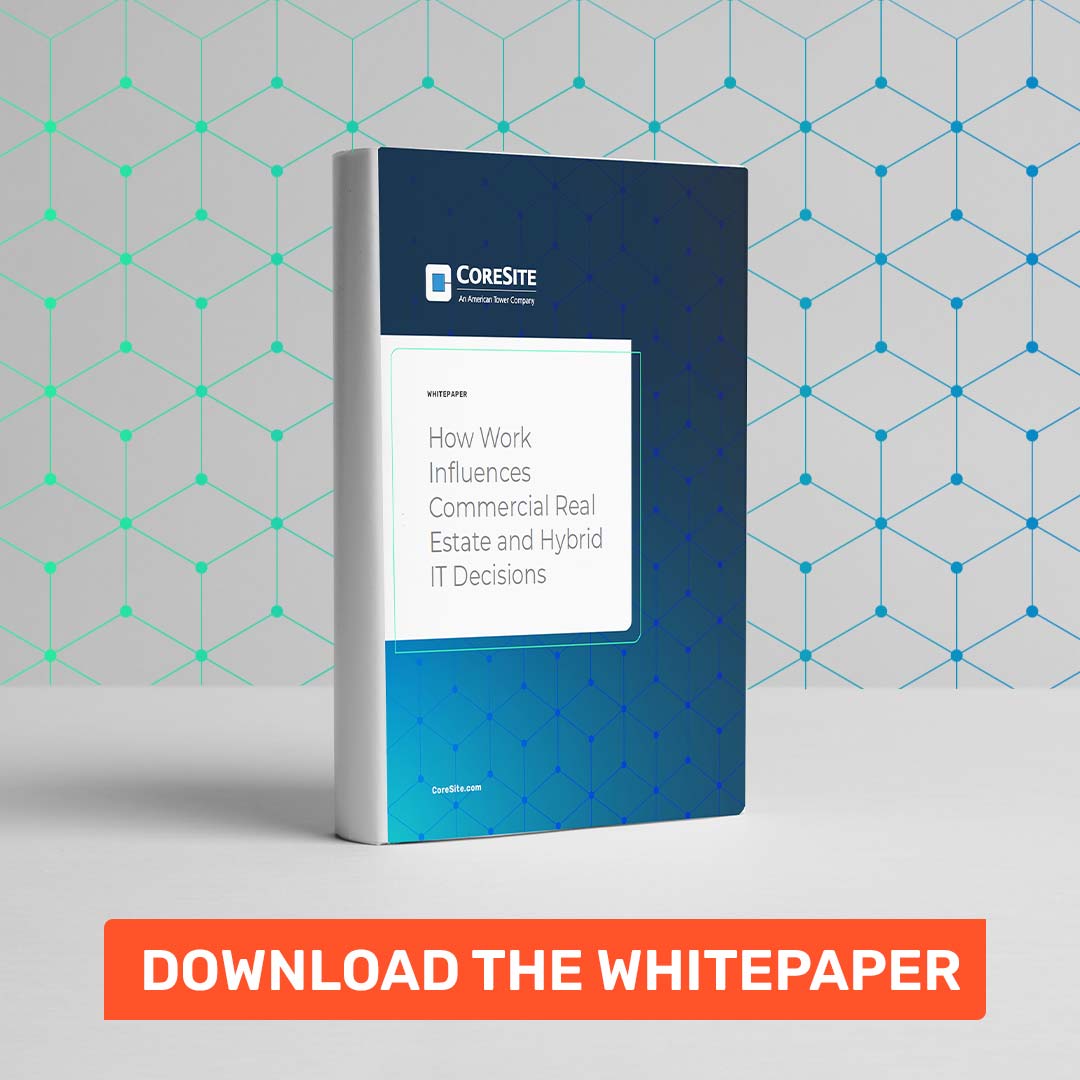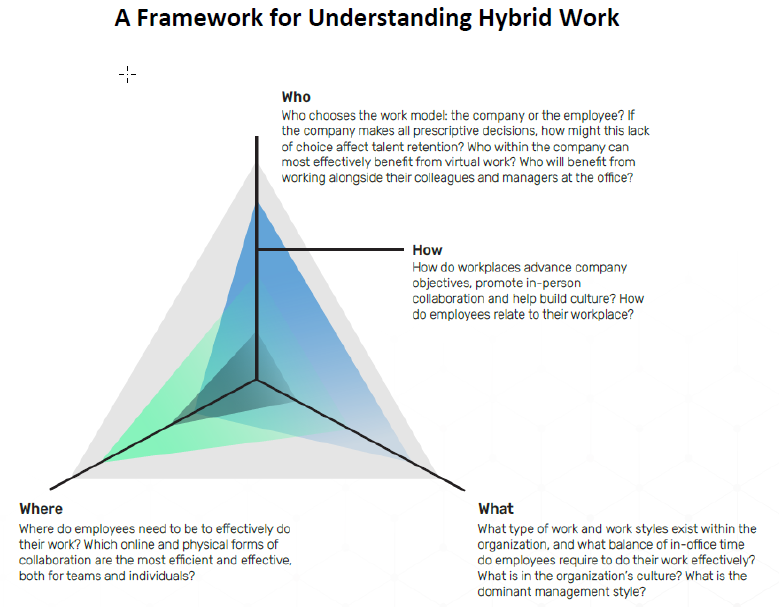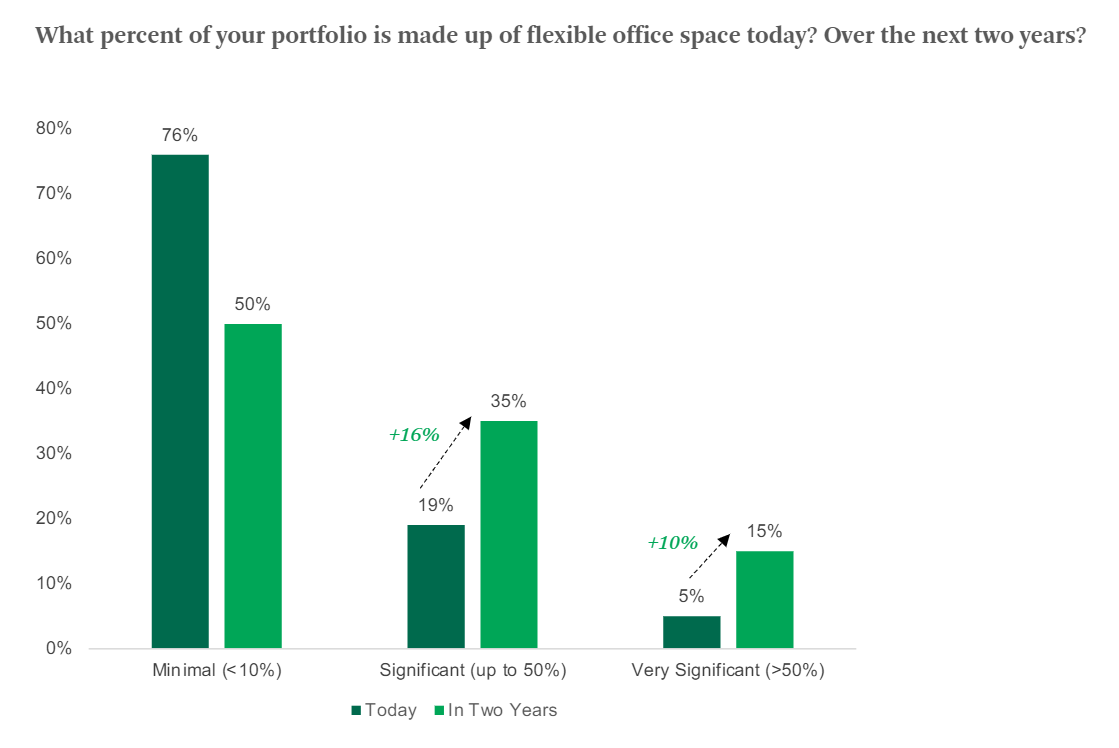
Hybrid Work and Colocation Support “Flexagility”
According to a Pew Research Center January 2022 study, “among those who are currently working from home all or most of the time, 78% said they’d like to continue to do so after the pandemic, up from 64% in 2020.”1 Once workers got a taste of working from home, they wanted to do it “most of the time,” which has come to be known as hybrid work.
However, implementing a hybrid work model isn’t simply a matter of allowing workers the flexibility to choose where they want to work. Decisions need to be made about real estate footprint, workspace design, collaboration tools and IT strategy. Global commercial real estate services company CBRE found that 87% of large employers believe a hybrid work policy is their new normal, versus only 7% that will remain primary office based.2
At the highest level, planning for the “new normal” encompasses:
- Updating hybrid/remote work policies, with an eye to balancing worker preferences with what’s good for the business (who needs to be where, when and doing what kind of work).
- Identifying how various spaces will be used to enable repositioning and/or reusing space, with a focus on “best place” for people to work.
- Transitioning the IT infrastructure to support hybrid workforces while optimizing the IT infrastructure for performance (including availability and speed), compliance and security.

What are New Hybrid Work Models and Policies?
Hybrid work is a phase of digital transformation that has led to flexagility, a best practice that combines flexibility (bend without breaking) and agility (quick response and adaptability). It also has led to a spectrum of hybrid work models aimed at satisfying employee preferences while maintaining a collaborative culture and helping assure desirable return on real estate asset investments:3
- Office-first – The office is the primary workplace, although companies that choose this model allow employees to work virtually some of the time. The rationale for this model includes the idea that being in the office “most of the time” is critical to the company’s culture.
- Blended – This model typically balances time spent in physical and virtual environments, with the expectation that being in the office is a priority for collaborative activities.
- Virtual first – Work from home (WFH) is the “new standard” because it’s proven to be effective. A virtual work culture prevails, but companies keep some office space where employees can collaborate and work as needed.

How Does Flex Space Fit into Real Estate Portfolio Trends?
Organizations are reviewing their footprint strategies and assessing elements such as flex space. The demand for flexible office space will increase substantially to allow for penalty-free contraction or expansion. In fact, nearly 70% of large companies list flexible space among the top three office building amenities they want.3 And while flex space is a big part of footprint optimization, enterprises also are evaluating the role of core space, satellite/branch offices and WFH.
Colocation offers a customizable data center solution that allows minimizing or eliminating on-premises data centers. Imagine what you might do with the space, instead of using it for servers, routers and cooling systems.
How Can Colocation Support Flexagility?
A hybrid IT strategy also can offer great flexagility. A hybrid IT infrastructure is a mix of various types of cloud solutions, colocation and on-premises operations. Striking data center chores from a manager’s to-do list creates resource allocation flexibility. With your colocation provider handling day-to-day data center tasks, your IT teams can direct their energy and skills to revenue-generating projects.
Colocation enables IT infrastructure agility. You hear that a lot, what does it mean? Three advantages where space planning and migrating to a colocation data center overlap are:

- Scalability – Increase the data center footprint without raising capital expenses (CapEx)
- Energy costs – Reduce consumption created by powering servers and coolers
- Staffing – Less security and maintenance personnel on-site engenders redirecting those budget items; you can get creative with the money
Colocation offers compelling benefits, beginning with OpEx and cost reduction via direct connection to cloud service providers. Other advantages include low latency network performance and access to an ecosystem of network providers, IT service providers, content delivery networks and other enterprises.
Learn More About Hybrid Work Models and Hybrid IT Options
It might be a good time to make sure your hybrid work model and hybrid IT strategy are aligned. You can do that by downloading new white paper from CoreSite developed to help you identify the who, how, where and what of hybrid work models and learn more about hybrid IT, colocation and managed IT solutions.
Get the white paper How Work Influences Commercial Real Estate and Hybrid IT Decisions now!








